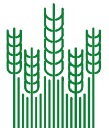Energy efficiency of fossil and renewable fuels
Assessment results of renewable energy supply in agriculture and forestry are often questionable because
1. the methodology does not describe the nature dependent conditions of agricultural production, 2. there
is no standard system boundary, 3. thermodynamic laws are violated and/or ignored, 4. direct and embodied
energy is mixed, 5. the mainstream life cycle analysis (LCA) takes downstream and upstream inputs
arbitrarily into consideration, depending on the research objectives and the research-funding agency.
Thus, the calculation results neglect a wide range of specific energy input figures of upstream and downstream
factors outside farm level resulting in non-comparable figures.
The EROI describes the ratio between energy output and input. The advantage of this measure is
that energy input and output of fuel supply as well as the resulting CO2 emissions are comparable. There
are no standards to calculate the indirect energy input of commodities and services hidden in monetary
inputs (insurances, rent for land, subsidies and fees etc.). They are usually excluded because procedures to
handle them as energy input are rare. The easiest way to quantify the indirect energy is the use of the energy
intensity (EI). Multiplying the price of any good or service with the energy intensity results in a
rough estimation of energy embodied in the good or service. Applying the EROI and the EI to compare
the efficiency of fossil and renewable energy supply released the following results:
Substitution of fossil fuels by renewable ones causes always additional costs. Most known renewable
energy supply techniques need more energy than fossil fuel exploitation. Polluting the environment is
- for the time being – the most competitive alternative. Renewable engine fuel, produced from biomass, is
not competitive with fossil fuels in terms of EROI. The energy of one ha biomass may substitute gasoline
to drive a car 40 000 km with biogas. Electric power harnessed from one ha solar panels enables to drive
an electric vehicle 5 000 000 km applying the same calculation method. The most efficient way to mitigate
CO2 emissions is to include the entropy of agricultural products in energy policy decision making.
Albeit wood has a high EROI, processing fuels from wood of low entropy makes no sense: Producing a
table from a tree and burning the residues and the table at the end of its lifetime renders the same energy
gain as using the tree for fuel only. The EROI of fossil fuels remains probably on high level during the
next 50 to 100 years. Oil and gas will be replaced by coal, in Finland also by nuclear power, peat and
wood. Although biomass is more renewable than fossil fuels, its EROI is lower and substitution will not
reduce CO2 emissions.
Climate change may force humankind to reduce fossil fuel consumption. The only sustainable way
to achieve this is reduction of fossil fuel exploitation
- Log in to post comments


